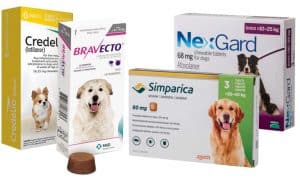“This post contains affiliate links, and I will be compensated if you make a purchase after clicking on my links.”
The U.S. Food and Drug Administration is alerting pet owners and veterinary professionals about reports of eye injury and irritation in both people and dogs following application of the canine ear medication Osurnia or Claro to dogs.

Osurnia and Claro are FDA-approved prescription drugs that are used to treat ear infections in dogs and are intended to be administered by veterinary medical professionals. Osurnia and Claro each contain the antibacterial drug florfenicol and the antifungal drug terbinafine, coupled with different steroidal anti-inflammatory drugs.
Most reports in people describe the eye exposures as occurring during or closely following application of these medications to the dog’s ear(s). In some reports, the eye injuries occurred after the medication was applied to the ear(s) and the dog shook its head. Other reports simply state that medication splashed into the eyes of the person.
As of October 17, 2017, the FDA has received two reports of corneal ulcers in people, both veterinary technicians, following accidental eye exposure to Osurnia. To date, no reports of corneal ulcers have been reported in people associated with the use of Claro. However, other injuries, such as eye irritation, redness, burning, stinging, and itchiness, have been reported in veterinary personnel, pet owners, or others who were near the dog during or after application of Osurnia or Claro to the dog’s ear(s).
As of October 17, 2017, the FDA has received 10 reports of corneal ulcers in dogs associated with the use of Osurnia, and 10 reports associated with the use of Claro. Other clinical signs reported in dogs include eye irritation, conjunctivitis, squinting and eye pain after application of Osurnia or Claro to their ears.
The FDA advises people administering Osurnia and Claro to take care to prevent these medications from contacting their eyes, or the eyes of other people nearby. Precautions should also be taken to prevent medication getting in the eyes of the dog being treated. If accidental exposure to the eyes of people or dogs occurs, seek medical care.
The FDA continues to monitor these reports and encourages veterinary professionals and pet owners to report adverse drug events to the manufacturer of the drug. The manufacturer is in turn required to report this information to the FDA.
To report suspected adverse drug events for Osurnia, contact Elanco US Inc. at 1-888-545-5973.
To report suspected adverse drug events for Claro, contact Bayer HealthCare at 1-800-422-9874.
For additional information about adverse drug experience reporting for animal drugs, see How to Report Animal Drug Side Effects and Product Problems.























